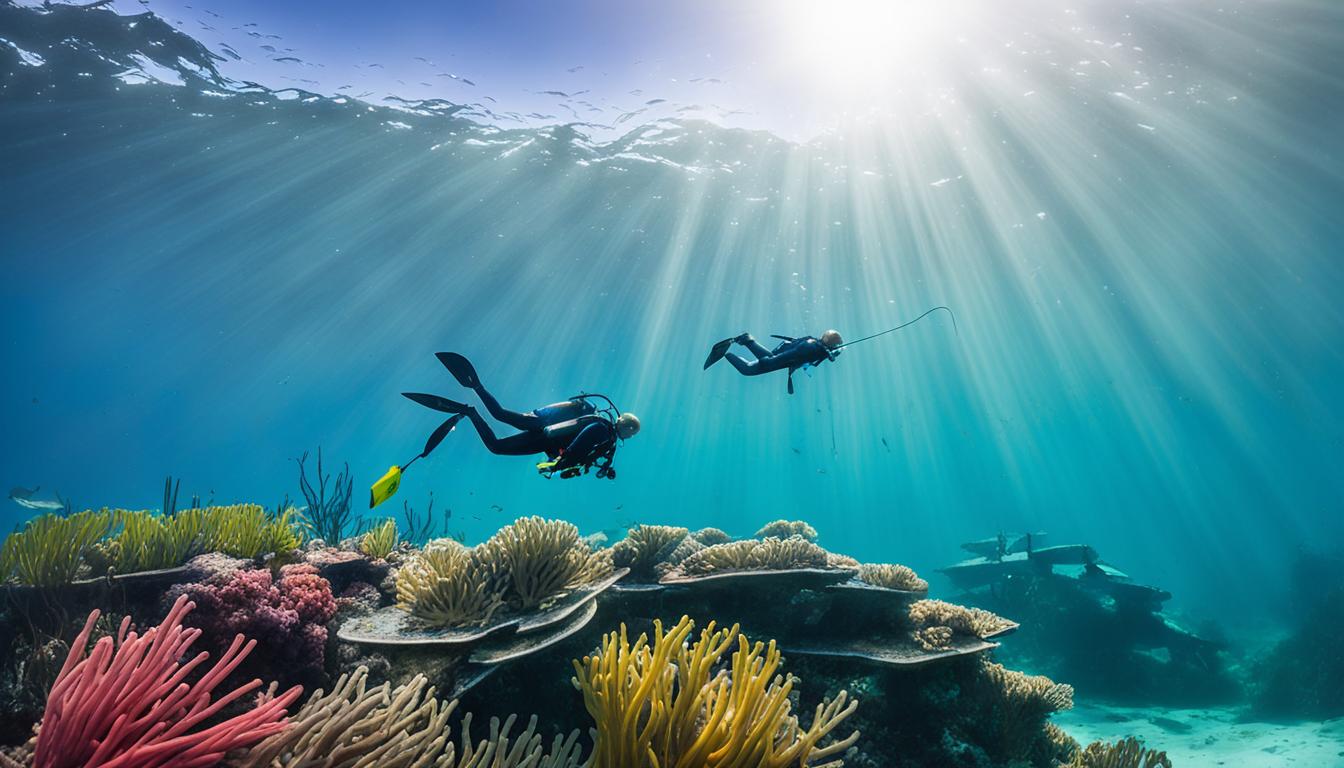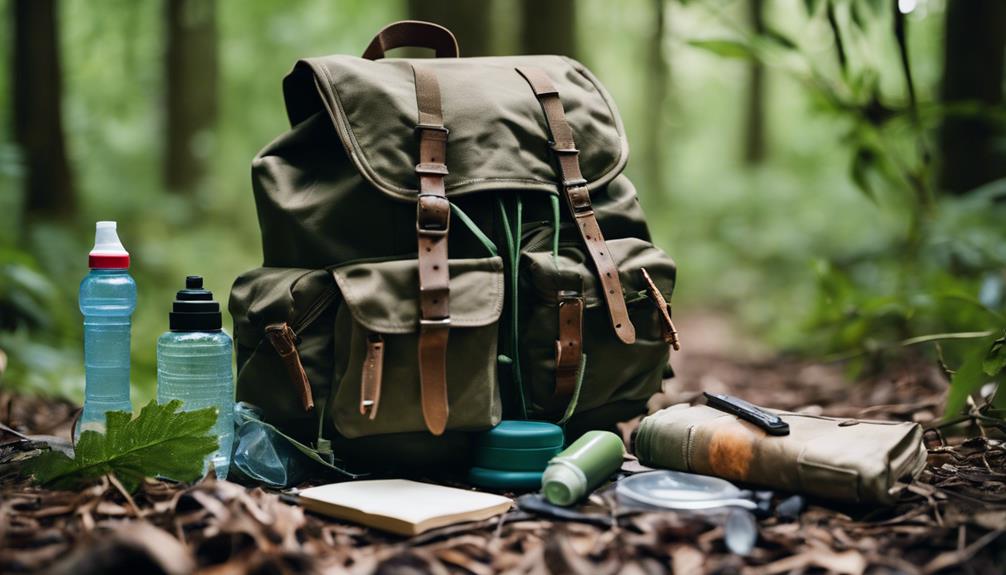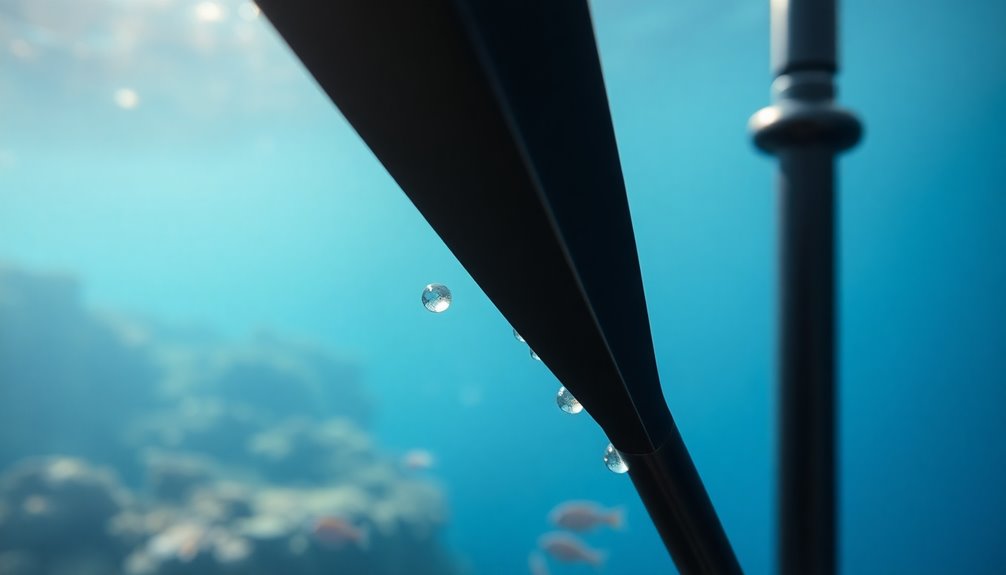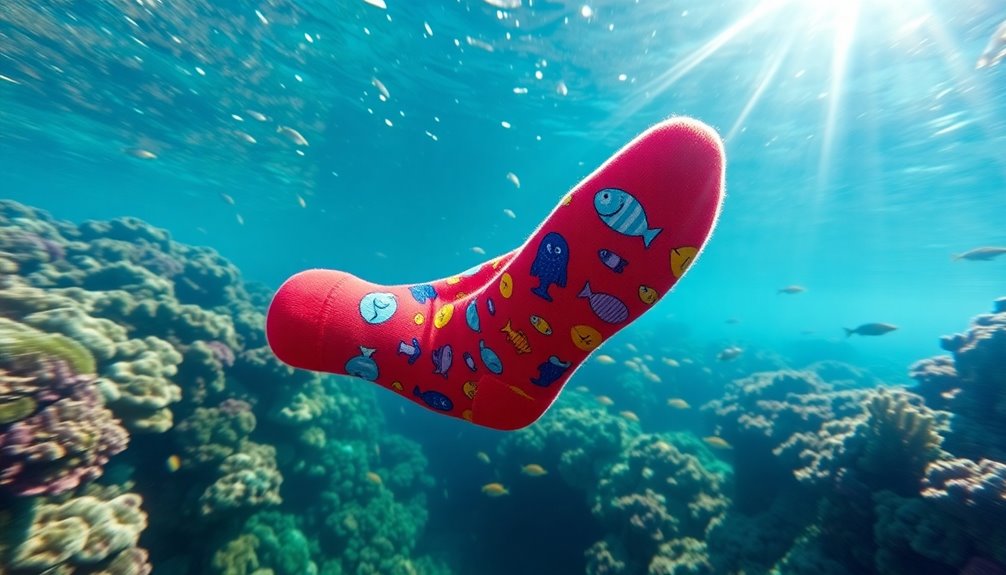Imagine diving into the crystal-clear waters of Moreton Island, surrounded by a thriving marine ecosystem. The sun kisses your skin as you descend further into the depths, your heart racing with anticipation. As you navigate through the underwater wonderland, your eyes catch a glimpse of a school of colorful fish darting through the coral reef. This is spearfishing on Moreton Island, a thrilling adventure like no other.
Key Takeaways:
- Moreton Island offers excellent spearfishing opportunities in its pristine waters.
- The Tangalooma Shipwrecks and Outer Reefs are popular spearfishing spots.
- Proper gear and techniques are essential for a successful spearfishing experience.
- Stay safe by following local regulations and practicing responsible spearfishing.
- Charter options are available for beginners and experienced spearfishers.
Top Spearfishing Spots on Moreton Island
When it comes to spearfishing, Moreton Island is a paradise waiting to be explored. With its crystal clear waters and abundant marine life, this stunning island offers some of the best spearfishing spots in the world. Whether you’re a seasoned spearfisherman or a beginner looking to try your hand at this exciting sport, Moreton Island has something for everyone.
Tangalooma Shipwrecks
One of the top spearfishing spots on Moreton Island is the Tangalooma Shipwrecks. These sunken vessels create a unique and thriving ecosystem, attracting a variety of fish species. As you dive down among the wrecks, you’ll find yourself surrounded by colorful coral, tropical fish, and possibly even swimming alongside graceful turtles. The Tangalooma Shipwrecks offer a truly exhilarating spearfishing experience.
Outer Reefs
Another must-visit location for spearfishing enthusiasts is the Outer Reefs of Moreton Island. These deep-sea reefs are home to a plethora of fish species, including Snapper, Coral Trout, and many others. The Outer Reefs provide the perfect backdrop for an unforgettable spearfishing adventure. With their vibrant underwater landscapes and abundance of marine life, these reefs are an angler’s dream come true.
So whether you’re seeking the thrill of spearfishing among the Tangalooma Shipwrecks or exploring the bountiful Outer Reefs, Moreton Island has the best spearfishing spots to suit every diver’s preference. Immerse yourself in the breathtaking beauty of this island paradise and embark on an unforgettable spearfishing journey.
Imagine yourself surrounded by the vibrant colors of the underwater world as you spearfish in the clear waters of Moreton Island. With its diverse marine life and stunning natural landscapes, this Australian gem is a spearfishing haven. Discover the thrill of spearfishing on Moreton Island and create memories that will last a lifetime. As you glide through the crystal-clear water, schools of fish dart around you, their shimmering scales catching the sunlight as they dance in unison. The reef teems with life, offering prime opportunities for both skilled and novice spearos alike. For those looking to further their skills or explore new fishing grounds, *Perth spearfishing adventures* also offer unforgettable experiences along Australia’s western coastline, where diverse marine ecosystems await.
Essential Spearfishing Gear for Moreton Island
When preparing for a spearfishing adventure on Moreton Island, having the right gear is essential. The right equipment will not only enhance your safety but also improve your chances of success in the water. Here are the essential spearfishing gear items you should consider:
1. Speargun
A speargun is the primary tool for underwater hunting, and approximately 95% of spearfishing gear kits include one. It allows you to accurately target and capture your desired fish species.
2. Mask, Snorkel, and Fins
A comfortable mask that provides a clear field of vision, a snorkel for efficient breathing at the surface, and fins for increased maneuverability are crucial gear items for any spearfisher. These items assist in navigating the water and locating your prey.
3. Wetsuit
Wearing a wetsuit is highly recommended as it serves a dual purpose. Firstly, it protects you from the cold water, especially during the winter months. Secondly, a wetsuit shields your body from potential scrapes and cuts while diving.
4. Weight Belt
A weight belt is an essential accessory to help maintain buoyancy control and stability underwater. It enables you to achieve neutral buoyancy, allowing for easier maneuvering and precise shots.
5. Dive Knife
A dive knife is a crucial safety tool. It can be used for cutting yourself free from entanglements, freeing your spear if it gets caught, or as a means of self-defense if you encounter any unforeseen threats.
6. Gloves
Gloves provide protection for your hands, making them invaluable when handling fish or navigating rocky surfaces. They also help to minimize the risk of injuries or painful encounters with marine life.
7. Hawaiian Sling or Spear Gun
Depending on your preference, you can choose between a Hawaiian sling or a speargun. Both tools enable you to accurately project your spears towards your target fish.
8. Diver’s Float
A diver’s float is a useful accessory that allows you to store your catch and transport it easily while maintaining your mobility in the water. It also serves as a visible marker to alert other watercraft of your presence.
By ensuring you have these essential spearfishing gear items, you will be well-equipped for your adventure on Moreton Island. Remember, having the right gear not only enhances your safety but also contributes to a successful and enjoyable spearfishing experience.

Techniques for Successful Spearfishing on Moreton Island
When it comes to spearfishing on Moreton Island, mastering the right techniques can greatly enhance your chances of a successful catch. Whether you’re a seasoned spearfisherman or a beginner, employing these techniques will help you make the most of your underwater adventure.
1. Stalking: One of the key spearfishing techniques is stalking. This involves quietly observing the behavior of your target species and slowly closing the distance between you and the fish. Being patient and moving slowly will increase your chances of getting close enough for a successful shot.
2. Stealthy Approach: Stealth is crucial in spearfishing as it allows you to surprise your prey. Swim silently and avoid sudden movements that can startle the fish. Keeping a low profile and blending in with the surroundings will make you less noticeable, increasing your chances of a successful hunt.
3. Understanding Target Species: Each species has its own behavior and habits. Take the time to learn about the fish you’re targeting on Moreton Island. Understand their feeding patterns, preferred habitats, and swimming behaviors. This knowledge will help you anticipate their movements and position yourself for the best shot.

4. Patience: Patience is key when spearfishing. It’s important to remain calm and composed, even if you miss a shot or encounter difficulties. Take your time, observe your surroundings, and wait for the perfect opportunity to strike. Remember, spearfishing is a game of patience and precision.
5. Proper Shot Placement: To increase your chances of a successful catch, aim for the vital organs of the fish. The ideal shot placement varies depending on the species, so familiarize yourself with the anatomy of your target fish. A well-placed shot will ensure a quick and humane kill.
6. Dive with a Buddy: Safety should always be a top priority when spearfishing. Always dive with a buddy, as having someone by your side can provide assistance in case of emergencies. Additionally, a buddy can help spot fish and enhance the overall experience.
Remember, spearfishing techniques require practice and experience. The more time you spend in the water, the better you will become at understanding the behavior of different species and executing precise shots. Combine these techniques with the knowledge of Moreton Island’s marine ecosystem, and you’ll be well on your way to a successful spearfishing adventure.
Continue reading to learn essential safety tips for spearfishing on Moreton Island.
Safety Tips for Spearfishing on Moreton Island
Spearfishing is an exciting sport that allows you to explore the underwater world and catch your own dinner. However, it’s important to prioritize safety while engaging in this activity. By following these spearfishing safety tips, you can ensure a safe and enjoyable experience when spearfishing on Moreton Island.
Dive with a Buddy
One of the most important spearfishing safety tips is to always dive with a buddy. Statistics show that 72% of spearfishing accidents occur when divers are alone, emphasizing the importance of having a safety partner. Diving with a buddy provides an extra layer of protection and ensures that help is readily available in case of an emergency.
Proper Equipment Handling
Accidents can often be prevented by properly handling your spearfishing equipment and regularly maintaining it. According to data, 67% of spearfishing injuries are related to improper handling of equipment or lack of equipment maintenance. Take the time to familiarize yourself with your gear, perform regular checks, and ensure that everything is functioning correctly before each dive.
Respect Local Regulations
Respecting local regulations and adhering to catch limits are crucial for sustainable fishing practices. An overwhelming 85% of spearfishing enthusiasts believe in the importance of following these regulations. Make sure to familiarize yourself with the rules and regulations specific to Moreton Island and the Moreton Bay Marine Park to protect the environment and preserve fish populations for future generations.
Receive Proper Training
Undergoing formal freediving training can greatly enhance your skills and safety while spearfishing. As per statistics, 60% of spearfishers report an improvement in their breath-holding ability after receiving professional instruction. Proper training teaches you techniques for breath control, diving safely, and managing your energy, making you a more confident and competent spearfisher.
Practice Ethical Fishing
Ensuring the sustainability of fish populations is crucial. Research indicates that 45% of spearfishing destinations worldwide have experienced a decline in fish populations due to overfishing. As responsible spearfishers, it’s our responsibility to practice ethical fishing by adhering to catch limits and avoiding the targeting of vulnerable species.
Environmental Conservation
Show your commitment to the environment by engaging in post-dive clean-up activities. An impressive 80% of spearfishers actively participate in cleaning up debris from the marine environment. Bring a mesh bag with you during your dives and collect any trash or debris you encounter. By taking this small step, you contribute to the conservation of the marine ecosystem.
Proper Equipment Storage and Maintenance
Avoid equipment failures by storing and maintaining your gear properly. An astounding 95% of spearfishing equipment failures are due to improper storage or lack of maintenance. After each dive, rinse your gear with fresh water and store it in a cool, dry place. Regularly inspect your equipment for any signs of wear and tear and replace or repair as necessary to prevent accidents while diving.
Following these spearfishing safety tips will ensure that you have a safe and enjoyable experience while exploring the underwater world on Moreton Island. Remember to always prioritize safety, respect the marine environment, and enjoy the thrill of spearfishing responsibly.

Charter Options for Spearfishing on Moreton Island
If you’re looking for a memorable spearfishing adventure on Moreton Island, booking a charter is an excellent option. These charters provide expert guides who are well-versed in the best spearfishing spots and techniques, ensuring an exciting and successful experience.
With the help of experienced guides, you can explore the diverse fishing opportunities that Moreton Bay has to offer. Whether you’re targeting snapper, coral trouts, mackerels, mahi mahis, parrot fish, tuna, or tusky fish, charter operators in the area have high success rates in helping anglers catch their desired species.
The charters typically have a maximum capacity of 10 people, ensuring personalized attention and quality instruction throughout the trip. Age is no barrier, as most charters have an age limit of 14+.
Charter durations usually range from 6 to 10 hours, providing ample time to explore different locations and maximize your chances of hooking the prized catch. During the trip, you’ll have access to the boat’s amenities, including hot showers and a free gourmet BBQ, ensuring a comfortable and enjoyable experience.
The charter packages often include various inclusions such as a knowledgeable guide, a support tender to transport you to the best fishing spots, weights for diving, and a delicious BBQ lunch to refuel and recharge.
Frequently Asked Questions
- Is spearfishing equipment included in the charter trip? No, spearfishing equipment is not included in the charter trip but is available for purchase. It is recommended to bring your own gear or make arrangements to rent it in advance.
- What food and drinks are provided during the charter? Most charters include a BBQ lunch as part of the package. However, it is advisable to check with the charter operator regarding specific dietary restrictions or additional food and drink options.
- What are the chances of experiencing seasickness during the charter? Moreton Island’s waters are generally calm and offer a smooth sailing experience. However, if you are prone to seasickness, it is recommended to take necessary precautions such as taking motion sickness medication before the trip.
Embark on a spearfishing charter on Moreton Island and indulge in an unforgettable underwater adventure. With expert guidance, top-notch amenities, and the thrill of hunting your favorite marine species, these charters provide the perfect platform to create lifelong memories. Don’t miss out on the opportunity to explore the vibrant underwater world of Moreton Bay!

Regulations for Spearfishing on Moreton Island
When engaging in spearfishing on Moreton Island, it is crucial to be aware of and comply with the local regulations to ensure the preservation of the marine ecosystem and promote sustainable fishing practices. Here are some key regulations to keep in mind:
Protected Species
Moreton Bay prohibits the taking of bivalve molluscs and gastropods (excluding pipis) in the waters of Moreton Bay Marine Park and the tidal waters flowing into the marine park. Additionally, the taking of black jewfish is prohibited in North Cape York regulated waters to protect these species from overfishing.
Specific Area Closures
Various areas have specific spearfishing restrictions. For example, spearfishing is regulated in waters like Cape Edgecumbe, where foreshores and waters seaward 50m from the low-water mark are closed around the cape. The Fraser Island closure, from 1 August to 29 September, limits the taking of fin fish in the eastern foreshore waters and within 400m out to sea from the eastern shore at low water. Moreover, certain areas, like William Bay, close designated waters to netting methods for recreational fishing activities.
Time Restrictions
Spearfishing for barramundi is restricted between 6pm and 6am in certain areas. These time restrictions are in place to ensure the sustainability of the barramundi population and protect their spawning grounds during peak periods.
Business Regulations
Business regulations for spearfishing on Moreton Island vary by specific geographic locations and are outlined in detailed boundaries. It is recommended to consult the relevant authorities or fisheries legislation to understand and abide by these regulations to operate legally and responsibly.
General Fishing Restrictions
It’s important to note that all-year-round fishing restrictions apply to certain waters in the area, such as the Fitzroy River, Tinana Creek, and Coombabah Lake. These restrictions aim to preserve the environment and ensure public safety.
Permits and Boundaries
Specific boundaries for regulated areas can be found by consulting fisheries legislation or relevant authorities. Permits are required for various commercial or high-impact activities within the Moreton Bay Marine Park, including commercial tourism, collecting restricted marine plants or animals, and conducting high-impact firework events. It is essential to obtain the necessary permits and adhere to the designated boundaries to protect the marine environment.

By understanding and complying with these spearfishing regulations, you can enjoy your experience on Moreton Island while being conscious of the marine environment’s sustainability. By practicing responsible fishing, we can help preserve the natural beauty of Moreton Bay for future generations to enjoy.
Equipment Guide for Spearfishing on Moreton Island
When it comes to spearfishing on Moreton Island, having the right equipment is essential for a successful and enjoyable experience. In addition to the essential gear mentioned earlier, there are other equipment options that can enhance your spearfishing adventures.
A spearfishing float serves multiple purposes. It provides buoyancy, allowing you to rest and conserve energy while in the water. It also ensures your catch remains secure and visible while you continue hunting. Attach a dive flag to your float to signal your presence to other watercraft and promote safety.
Using a flasher or fish-attracting device can significantly increase your chances of attracting fish to your desired location. These devices mimic the movement and appearance of a school of fish, capturing the curiosity of potential targets and drawing them closer to your hunting spot.
Don’t forget to bring a fish stringer or catch bag to securely store your catch underwater. A fish stringer allows you to attach your catch while in the water, keeping them nearby and ensuring they stay fresh until you finish your spearfishing session. Alternatively, a catch bag can be used to contain your catch, which can be attached to your float or worn around your waist for easy access.

Spearfishing Equipment Guide
| Equipment | Max Size/Quantity | Restrictions |
|---|---|---|
| Cast nets | Max 3.7m | Max mesh size: 28mm |
| Crab pots or dillies | Up to 4 per person | Each requires tag with user’s details attached |
| Fishing lines | Max 3, with up to 6 hooks | |
| Spearfishing | Selected tidal water locations | Restricted hours apply |
| Canister traps | Max length: 60cm | Max diameter: 50cm Max mesh size: 25cm |
| Collapsible traps | Made of rigid material 1 or more collapsible sides |
|
| Funnel and round traps | Size restrictions and allowable mesh sizes vary based on location within Queensland |
Remember to adhere to the regulations and restrictions for each type of equipment when spearfishing on Moreton Island. It’s important to make sure you are using the appropriate gear and following any size or quantity limitations set by the authorities.
With the right equipment in hand, you’ll be well-prepared to dive into the underwater world and embark on thrilling spearfishing adventures on Moreton Island.
Experiencing Spearfishing on Moreton Island
Spearfishing on Moreton Island is a thrilling adventure that offers anglers the opportunity to immerse themselves in the pristine waters of Moreton Bay Marine Park. With its vibrant artificial reefs, diverse marine life, and abundant fish species, Moreton Island provides an unparalleled spearfishing experience for enthusiasts of all levels.
Explore the Artificial Reefs
Moreton Bay Marine Park boasts a total of seven artificial reef sites that have been strategically established to enhance recreational fishing opportunities. These artificial reefs, funded by a $2.5 million investment from the Queensland Government, have attracted and sustained various marine life, making them ideal locations for spearfishing.
One notable artificial reef is the Harry Atkinson Artificial Reef, which covers an expansive 34-hectare area. It was first established in 1975 and is one of Australia’s oldest artificial reefs. The reef is home to diverse marine species and features over 17,000 old car tires deployed on the site, creating a unique habitat for fish.
Another popular spearfishing site is the North Moreton Artificial Reef. Spanning 200 hectares with an average depth of 14 meters, this reef is designed primarily for spearfishing. It consists of 25 ‘fish boxes’ strategically placed to attract a variety of fish species, providing an exciting challenge for spearos.
The South Stradbroke Artificial Reef is another must-visit location for spearfishers. With 20 ‘fish boxes’ deployed in clusters across a 208-hectare area at an average depth of 22 meters, this reef is designed to attract both pelagic and reef fish species. It offers a thrilling and rewarding spearfishing experience.
Abundant Fish Species
Moreton Island is a popular fishing destination known for its variety of fish species. When spearfishing on Moreton Island, you’ll have the opportunity to target a range of exciting fish, including whiting, dart fish, and tailor fish.
Whiting fishing on Moreton Island is particularly abundant, with sizes ranging from smaller diver whiting to larger summer whiting over 40cm. These prized fish provide an exciting challenge for spearos and are known for their delicious taste.
Dart fish are another prevalent species on Moreton Island, outnumbering other fish species along the entire length of the Eastern Beach. Spearos can enjoy the thrill of targeting these fast and agile fish, testing their spearing skills in the process.
Tailor fish offer exciting spearfishing opportunities, especially during their spawning run in the winter months. They can be found frequenting the Eastern Beach, rock headlands, and surf waters of Moreton Island, providing a thrilling hunt for spearos.
Protected Marine Environment
As part of Moreton Bay Marine Park, spearfishing on Moreton Island takes place in a protected environment that covers over 3400km2 of open and sheltered waterways. The park is home to diverse wildlife, including fish, birds, and marine turtles.
Moreton Bay is recognized as one of Australia’s top 12 shorebird habitats, attracting thousands of migratory wader birds between September and April. The Eastern Banks region of Moreton Bay plays a vital role in supporting the dugong population, with several ‘hot spots’ containing seagrasses that provide nourishment for these gentle marine mammals.
The clear visibility in Moreton Bay, averaging around 15-20m on the eastern coast of the outer islands, offers ideal conditions for spearfishing and diving. This allows spearos to fully appreciate the beauty and diversity of the underwater world while honing their skills.

| Artificial Reef | Description |
|---|---|
| Harry Atkinson Artificial Reef | Covers an area of 34 hectares with over 17,000 old car tires deployed on the site |
| North Moreton Artificial Reef | Consists of 25 ‘fish boxes’ deployed across 200 hectares at an average depth of 14 meters |
| South Stradbroke Artificial Reef | Features 20 ‘fish boxes’ deployed in clusters over a 208-hectare area at an average depth of 22 meters |
Embark on an unforgettable spearfishing experience on Moreton Island, where the thrill of the hunt combines with the beauty of the marine environment. With its artificial reefs, diverse fish species, and protected marine park, Moreton Island offers a spearfishing adventure like no other.
Conclusion
Embarking on a spearfishing adventure on Moreton Island is an experience that will leave you in awe. The island’s breathtaking landscapes and diverse marine ecosystem make it a paradise for spearfishers. From exploring the Tangalooma Shipwrecks to venturing into the Outer Reefs, there are endless opportunities to immerse yourself in the underwater world and test your skills.
As you dive into the crystal-clear waters of Moreton Island, you’ll be greeted by an abundance of marine life and mesmerizing coral reefs. The top-notch spearfishing spots will challenge and reward you, whether you’re targeting mullet, sea bream, whiting, tailor, prawns, or crabs.
While enjoying this thrilling adventure, it’s important to prioritize safety and adhere to the regulations set in place to protect the marine ecosystem. Remember to respect the Quandamooka Peoples’ native title rights and apply for permits if you’re fishing for traditional or ceremonial purposes.
With commercial fisheries and the recreational sector both contributing significantly to Moreton Bay’s economy, it’s evident that spearfishing plays a vital role in the region. So, pack your gear, dive into the depths, and discover the wonders of spearfishing on Moreton Island.










